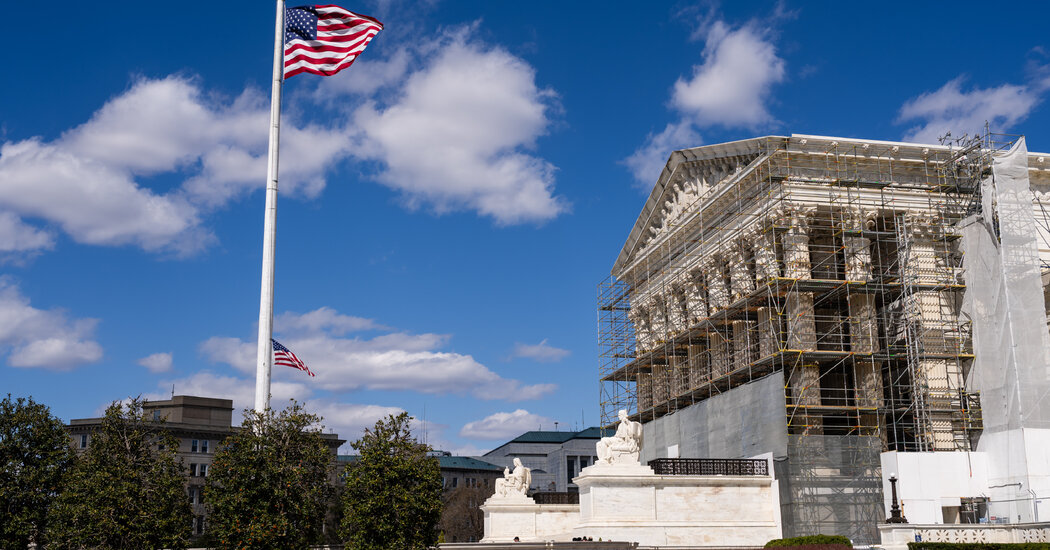The Supreme Court on Monday turned down an opportunity to weigh in on whether the government may restrict 18- to 20-year-olds from buying or carrying guns, a question that has divided the lower courts.
The case concerned a Minnesota law that makes it a crime for people under 21 to carry guns in public. Last year, the Eighth Circuit struck down the law, ruling that the Second Amendment required letting those as young as 18 be armed.
“The Second Amendment’s plain text does not have an age limit,” wrote Judge Duane Benton, who was appointed by President George W. Bush.
He relied on the 26th Amendment, which lowered the voting age to 18 in 1971. The amendment, Judge Benton wrote, “unambiguously places 18- to 20-year-olds within the national political community.”
Lower courts have struggled to apply recent Supreme Court decisions that transformed Second Amendment law by introducing a new test to judge the constitutionality of gun control measures. As Justice Clarence Thomas put it in his 2022 majority opinion in New York State Rifle & Pistol Association v. Bruen, such laws must be struck down unless they are “consistent with this nation’s historical tradition of firearm regulation.”
Keith Ellison, Minnesota’s attorney general, had urged the justices to return the case to the appeals court for reconsideration in light of United States v. Rahimi. In that case, decided last year, the Supreme Court ruled that the government can temporarily disarm people subject to restraining orders for domestic violence.
The decision revised the test announced in Bruen, Mr. Ellison wrote, and “instructed lower courts to focus on the principles underlying historical restrictions on firearms — not precise historical analogues.”
In the alternative, Mr. Ellison asked the justices to hear the case and sustain what he called the state’s “common-sense age regulation on the public carry of pistols.”
In an unusual move, the gun rights groups and individuals who had challenged the law and won in the appeals court joined Mr. Ellison in asking the Supreme Court to hear the case, resolve the split in the lower courts and announce a nationwide rule.
The Supreme Court, which turned down the case, Jacobson v. Worth, No. 24-782, without comment, will have other opportunities to consider the question of whether firearm restrictions for people aged 18 to 21 are constitutional.
In March, for instance, the U.S. Court of Appeals for the 11th Circuit, in Atlanta, upheld a Florida law that prohibits the sale of firearms to people under 21 by an 8-to-4 vote.
Writing for the majority in March, Judge William H. Pryor Jr. examined the historical evidence and found that people under 21 were considered to be minors when the Constitution was adopted. He said he drew two lessons from that fact.
“First, minors generally could not purchase firearms because they lacked the judgment and discretion to enter contracts and to receive the wages of their labor,” wrote Judge Pryor, who was appointed by Mr. Bush. “Second, minors were subject to the power of their parents and depended on their parents’ consent to exercise rights and deal with others in society.”
The 26th Amendment, he added, does not alter the Constitution’s original meaning.
Judge Andrew L. Brasher, who was appointed by President Trump, wrote that the legal age for adulthood when the Second Amendment was adopted was irrelevant. What matters, he wrote, is whether 18-year-olds are considered adults today.
“The founders adopted a Second Amendment that applies across changes in law, society and technology,” he wrote.
Judge Pryor responded that the original meaning of the Second Amendment was fixed at the time it was adopted. Judge Brasher’s dissent, he wrote, “would have us hold that the Second Amendment turns on an evolving standard of adulthood that is divorced from the text of the amendment and from our regulatory tradition.”
Adam Liptak covers the Supreme Court and writes Sidebar, a column on legal developments. A graduate of Yale Law School, he practiced law for 14 years before joining The Times in 2002.
The post Supreme Court Declines to Hear Case on Age Limits for Carrying Guns appeared first on New York Times.




